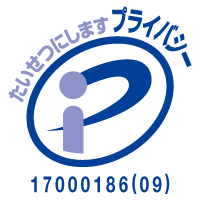Full Description
This book examines the issue of disaster recovery in relation to community wellbeing and resilience, exploring the social, political, demographic and environmental changes in the wake of the 2011 Fukushima disaster.
The contributors reflect on the Fukushima disaster of earthquake, tsunami and radiation contamination and its impacts on society from an interdisciplinary perspective of the social sciences, critical public health, and the humanities. It focuses on four aspects, which form the sections of the work:
Living with Risk and Uncertainty
Vulnerability and Inequality
Community Action, Engagement and Wellbeing
Notes from the Field
The first three sections present research on the long-term consequences of the disaster on community health and wellbeing. These findings are enhanced and developed in the 'Notes from the Field' section where local practitioners from medicine and community recovery reflect on their experiences in relation to concepts developed in the previous sections.
This work significantly extends the literature on long-term wellbeing following disaster. The case study of Fukushima is a multi-faceted process that illuminates wider issues around post-disaster regeneration in Fukushima. This problem takes on new importance in the context of Covid-19, including direct parallels in the issues of risk measurement, social inequality, and wider wellbeing impacts, which public health disciplines can draw from.
Contents
Chapter 1. The Reconstruction of Community and Wellbeing in Fukushima - Situating the Case within the Field, PART I: Reflections from the Field, Chapter 2. Reflections from Frontline Healthcare Workers, Chapter 3. Psychiatric Care after the Nuclear Accident in Fukushima, Chapter 4. Fukushima Hamadori (Coastal Area) High School Academy: Learning and Understanding about Nuclear Disaster for Fukushima High Schools Students, Chapter 5. The Increased Disaster-Related Deaths after the Fukushima Nuclear Disaster, and the System for their Compensation, PART II: Living with Risk, Chapter 6. Getting the Measure of Radiation Monitoring in Fukushima, Ten Years On, Chapter 7. Prioritizing Health Risks after the 3.11 disaster: The Application of Wellbeing Indicators, Chapter 8. Commensurability and Post-Disaster Mental Health after 3.11, PART III: Social Difference and Inequality, Chapter 9. Japan's Gender Perspective after the Explosions at Fukushima Daiichi Nuclear Power Plant, Chapter 10. Social Vulnerability and Inequality in Disasters: Marriage-Migrant Women's Experiences in the Tōhoku Region, Chapter 11. The Social Amplification of Stigma in the Media after the Fukushima Disaster, PART IV: Community Engagement and Wellbeing, Chapter 12. Theatres of Resilience: Children as Actors in Community Development in Fukushima, Chapter 13. Bonding After Fukushima: The Role of Trust Relationships Between Non-Profit Organisation Volunteers and Disaster Victims in Building Resilience Amidst a Nuclear Catastrophe, Chapter 14. Fukushima Reconstruction after Nuclear Accident and the Fukushima Daiichi Nuclear Power Plant (1F) Decommissioning Policy, Chapter 15. The Long-term Impact of Disasters and Looking Forward



